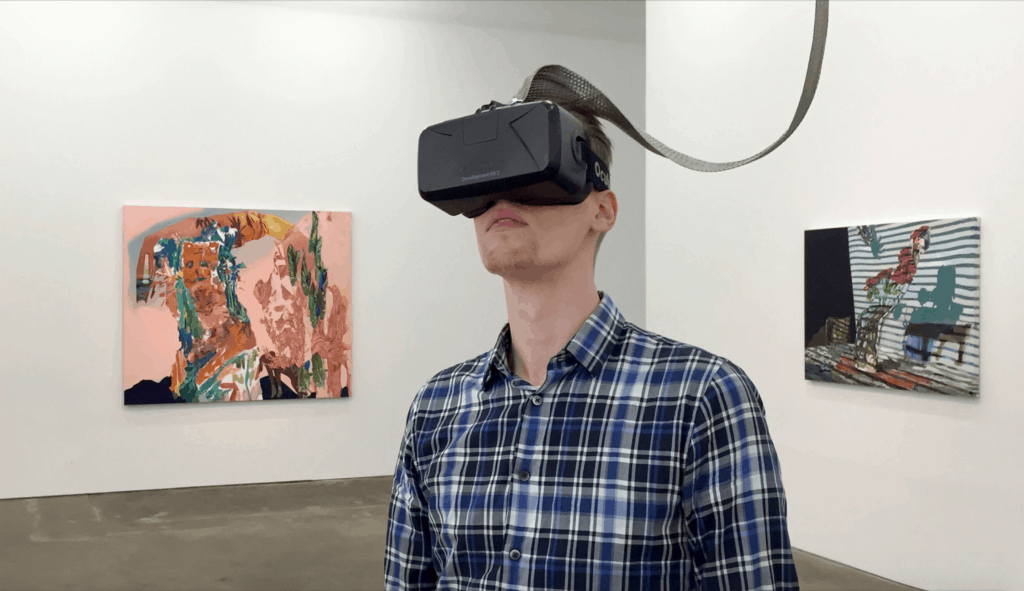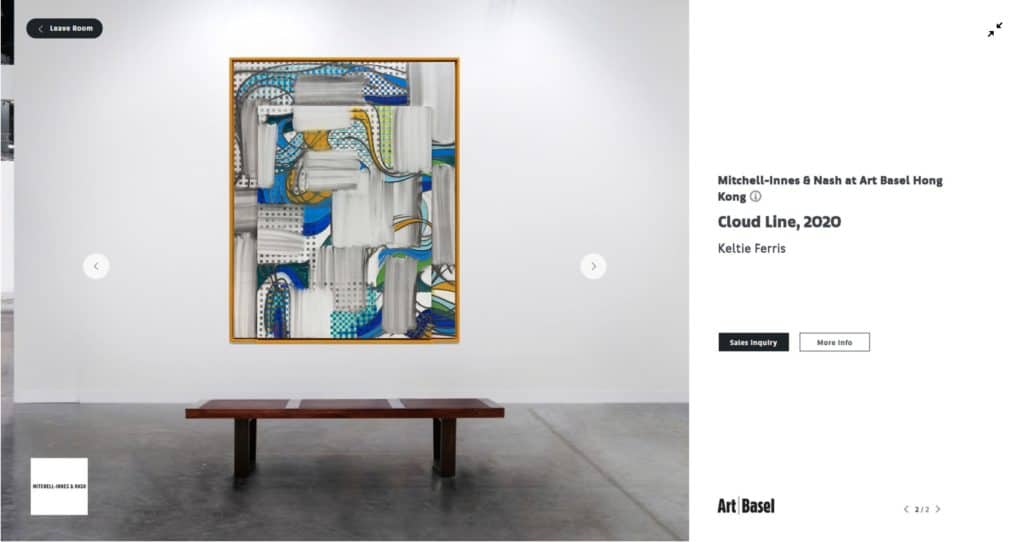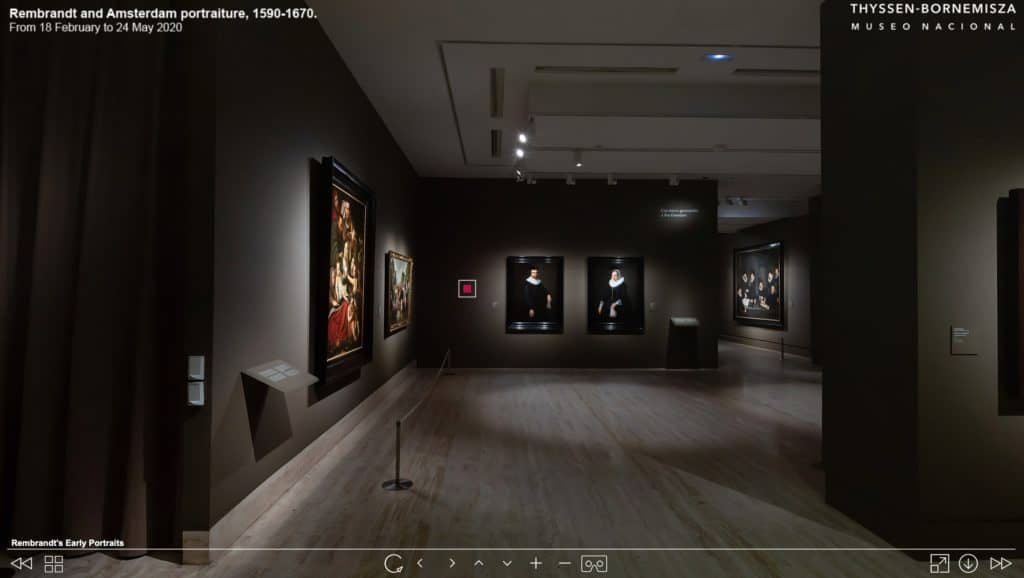Articles and Features
You and Me and Everyone We Know:
How the Coronavirus Is Affecting Art, Life, Work and Everything Else


Christian Viveros-Fauné | Kulchur Vulture
Viveros-Fauné is Artland’s inaugural Chief Critic and the contributor of this regular column. Based in New York City, he writes primarily about exhibitions and the cultural landscape there. His articles also feature Artland’s revolutionary 3D exhibition tours that enable the viewer to pay compelling virtual visits to actual exhibition spaces in support of the texts.
On January 23, the Chinese government put Chengdu, a city of 11 million people, into lockdown. Italy followed belatedly three weeks later by severely curtailing contact with cities and towns across Lombardy. On March 9, Primer Minister Giuseppe Conte tightened the noose on the pandemic by plunging the entire country into a strada-and-piazza-clearing quarantine.
On March 14 France and Spain also undertook nationwide shutdowns. In the ensuing weeks, countries as far flung as Ireland, Poland, Belgium, Sweden, the Czech Republic, The Netherlands, the U.K., Puerto Rico, New Zealand, Australia, Kenya, Morocco, Israel, El Salvador, Argentina, Colombia, Chile, Venezuela, Cuba and India have undertaken similar actions. Denmark, a country known for its progressive social policies, closed all schools, kindergartens, restaurants and cafés along with its territorial borders, while banning gatherings of ten people or more.
To date, the U.S. government has yet to declare a nationwide lockdown, but as of Sunday, March 22, New York City—the undisputed center of the art ecology and the once mighty beating heart of the global economy—was declared closed to all but the most essential business. Here’s what that means for the art dependent: no museums, no art fairs, no galleries, no auction houses, no academic conferences, no art benefits, no collection tours, no gallery dinners or cocktail parties, no trade gossip shared over drinks at the local watering hole and, in many cases, no artists tinkering in their studios in the manner of resolute Leonardos, Picassos or even Richard Princes.
More than a third of the world’s population, 2.6 billion people, are now confined to their homes in 36 countries, hemmed in officially by mandatory government orders. Today, we are neck-deep in a planetary social experiment—the unfortunate phrase “through the windshield” seems an all-too-apt description—the likes of which the world has never seen. Meantime, the art industry staggers, trips, adapts, rejiggers and reinvents itself. Curiously, self-isolation and self-confinement, rather than fully wiping out an industry that depends on large groups of people physically experiencing objects and performances, has driven a great deal of that activity underground—at least if you consider the ramen-like tangle of subterranean wires and underwater cables that make up the internet.

While most galleries, museums and arts organizations around the world remain closed, some entrepreneurially minded folks have migrated toward what George Bush Jr. once termed “the interwebs.” After cancelling the Hong Kong fair due to protests and the pandemic, Art Basel pivoted quickly, taking their embattled fair online. As a result more than 230 dealers replaced shipping and installing artworks with the alternate reality of displaying objets d’art in virtual viewing rooms. From March 18 to March 25, these dealer-cum-test-subjects presented more than 2,000 works with an estimated value of $270 million. Predictably, they met with mixed results: top galleries reported substantial purchases; many small-to-midsize galleries felt their own platforms were far better at dealing with sales and major technical glitches (the fair’s servers went down for 25 minutes on the first day of the VIP preview).
Despite the fact that other industries have offered similar retail experiences for decades, this was an event without precedent. If the aura of the art object, per Walter Benjamin’s “The Work of Art in the Age of Mechanical Reproduction,” once depended on its fundamental lack of reproducibility, today’s online art experience succeeds precisely because of its stark alternative—not seeing, enjoying or selling art at all. Megadealer David Zwirner, who began colonizing virtual space as early as 2017, summed up the emerging zeitgeist perfectly. The future, he told The New York Times days after Art Basel Hong Kong, has “arrived so much sooner.”
“ Epidemics, like wars and other crises, favor the rich but also the quick.”
Other less deep pocketed galleries around the world have followed Zwirner, Pace and Hauser & Wirth into the virtual breach like tech-savvy yeomen. Many have launched or are in the process of launching curated online exhibitions and digital exhibition walk-throughs (Full disclosure: I am currently organizing a museum exhibition and a gallery show online). In the U.S., the Art Dealers Association of America recently asked its members to make short films to post to Instagram and IGTV to spur sales. David Zwirner’s gallery, in a moment of laudable altruism, recently launched a program of showrooms for smaller galleries it christened “Platform: New York.” Along with rock concerts, Broadway shows, bespoke workouts and cocktail parties (courtesy of the app Houseparty), art projects of all stripes have rapidly moved online. In the era of COVID-19, digital seems to be the only option. Epidemics, like wars and other crises, favor the rich but also the quick.
On a less commercial tip, European and U.S. based museums and galleries might take instruction from Hong Kong—namely, from the city’s community-run art platform, Art Power HK. A self-described “organically grown community campaign supported by crowdfunding” and “a creative solution to the current situation, showcasing that the arts in Hong Kong are open, active and resilient,” the platform has pooled together that scene’s most prominent galleries, museums and auction houses (Christie’s, Phillip’s, Gagosian, Pace, Hauser & Wirth and Asia Society are among the participants) to offer online viewing rooms, live-streamed walkthroughs, interviews with artists and collectors, virtual studio visits and online talks galore. Conceived in early February to stave off the effects of the pro-democracy protests and the impending threat of coronavirus, Art Power HK was designed to be a longer-term initiative, intended to live on beyond the current crisis. Open to a bigger group of cultural players, it speaks louder than an art fair and past (or at least not primarily to) the pure profit motive.

Museums are, of course, also getting in on the online act. In Asia, Europe and the U.S. a number of institutions have turbocharged their virtual offerings for the era of social distancing. The Whitney Museum’s digital version of their current exhibition, “Vida Americana: Mexican Muralists Remake American Art, 1925-1945,” now features companion videos, essays, audio guides and installation photography—all in the service of illustrating how Diego Rivera and David Alfaro Siqueiros led directly to Abstract Expressionism. Madrid’s Museo Nacional Thyssen-Bornemisza moved its entire exhibition Rembrandt and Portraiture in Amsterdam, 1590-1670 online with a virtual tour reminiscent of the most seamless Zillow.com posting. And Turin’s Castello di Rivoli, which closed after opening three new shows—one features the contemporary Chinese collection of Uli Sigg—launched a series of daily stories on FaceBook, Instagram and its website that solidly, often lyrically, ghost the objects, sculptures and videos found inside their galleries.
And then there are the image gobbling efforts of Google Arts & Culture, Google’s not-for-profit outfit. Founded in 2011 to digitize the art in all the world’s museums—that hoovering sound you hear is the tech giant turning art into “content”—they have taken the opportunity to recently “open” several major virtual exhibitions while moving the entirety of the recently shuttered Sydney Biennial online. One of those exhibitions, “Faces of Frida,” was organized in collaboration with the San Francisco Museum of Modern Art, Japan’s Nagoya City Art Museum, The Museo Frida Kahlo and thirty other institutions. Besides breathless promo copy extolling Frida’s infamous biography, it includes image access to more than 200 original works as well as letters and archival material belonging to Madonna’s favorite artist. It’s most rewarding feature: Google’s proprietary technology Street View allows the audience to zoom in on the Mexican painter’s canvases and materials at a granular level.

As for artists, most are struggling to keep things together in a precarious environment unlikely to favor them with essential worker status. On the other hand, artists and writers have long practiced a form of social isolation—one repeated daily on entering studios and approaching writing desks. For this reason, among many others, they are uniquely positioned to provide fundamental lessons during a global shutdown. Take the Artist Support Pledge: an initiative set up by Sussex-based artist Matthew Burrows, it offers a lifeline to fellow artists around the world by posting their works onto Instagram for up to £200 using the #ArtistSupportPledge; once an artist has made £1,000 in sales, a pledge requires him or her to plough back £200 into the purchase of another’s artwork. The glue keeping the agreement together: trust, plain and simple, the same adhesive holding fast our increasingly tenuous social compact.
However you look at it, the map of the art world is being redrawn—starting now and continuing until the end of the lockdown, which is conservatively expected to last into July or longer. Until then, we will all be increasingly working, living, playing, experiencing, exhibiting, offering and selling online. That means you, me and everyone we know—plus everyone Kevin Bacon knows into the bargain. My two cents: take advantage of the virtual world as best you can. For the foreseeable future it’s not only all we’ve got, it’s everyone’s best bet for keeping the art world we love alive, kicking and healthy.
Related Reading
Read more by Christian Viveros-Fauné:
Kulchur Vulture No.10 Teresa Margolles at James Cohan, New York
Kulchur Vulture No.9: Noah Davis at David Zwirner, New York
Kulchur Vulture No.8 Faurschou Foundation: The Red Bean Grows in the South | New York